The History of Samurai Warriors: A Journey through History and Culture
written by art historian & curator
The samurai, renowned warriors of ancient Japan, have captured the imagination of generations with their loyalty, exquisite skills, and profound philosophical principles. The history of samurai warriors encompasses not only the evolution of their military prowess but also their cultural impact and deep-rooted philosophies that continue to resonate even in modern times. The captivating tale of bravery and duty spans centuries. From their origins as loyal protectors to their evolution into powerful feudal lords, the samurai played a pivotal role in shaping Japan’s modern history and culture. Their code of ethics, Bushido, continues to inspire and guide individuals to this day. While the era of the samurai may have come to an end, their legacy lives on as a testament to the enduring impact of their philosophy.
Videos on Japanese culture:
In Japan, the legacy of the samurai is deeply ingrained in the national identity. Values such as honour, loyalty, and discipline, are still celebrated and upheld as guiding principles in modern Japanese society. The samurai’s unwavering commitment to their lords and the embodiment of these virtues are often romanticised and serve as a source of inspiration for personal conduct. In popular culture, samurai have become iconic figures, appearing in literature, films, and video games. These representations often capture the essence of the samurai’s strength and tireless dedication to a cause. However, while some representations strive for authenticity, others may perpetuate stereotypes or misinterpretations. This can result in various opinions, from appreciation for accurate portrayals to concerns about cultural appropriation or oversimplification of their complex history. In the following lines, we will delve through a range of perspectives that reflect both the historical significance and the enduring influence of samurai on culture and values.
Origins and History
The samurai, whose name derives from the Japanese term “saburau,” meaning “one who serves,” emerged during the Heian period (794-1185). Initially, they were skilled horse archers who served as guards for aristocratic families. Over time, as Japan’s political landscape shifted and regional conflicts arose, the role of the samurai evolved from mere protectors to formidable warriors and feudal lords. During the Kamakura period (1185-1333), Japan underwent significant transformations. The rise of powerful samurai clans led to the establishment of a feudal system, where loyalty and service to a lord became the cornerstone of samurai identity. This era marked the ascendancy of the Minamoto and Taira clans, whose rivalry culminated in the Genpei War, shaping the trajectory of Japanese history. The Kamakura shogunate marked the emergence of the shogun, a military dictator who wielded immense power. Samurai were at the forefront of battles and became skilled in various martial arts, including swordsmanship, archery, and horsemanship. This period also saw the development of the iconic samurai sword, katana, which became a symbol of the samurai’s skill and honour. The Sengoku period (1467-1603), also known as the Warring States period, was characterized by political upheaval and intense military conflict. Feudal lords, or daimyo, vied for supremacy, and samurai played a fundamental role in these power struggles. Legendary figures like Oda Nobunaga, Toyotomi Hideyoshi, and Tokugawa Ieyasu rose to prominence during this era, eventually leading to the unification of Japan.
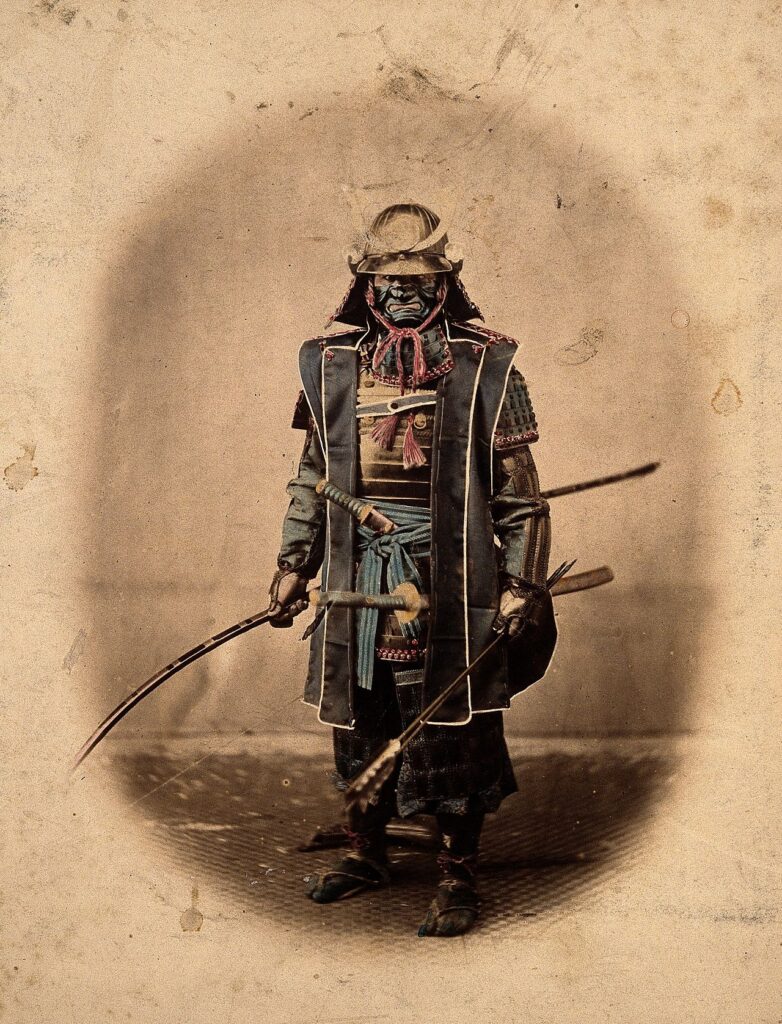
The Tokugawa shogunate is known as a period of relative peace. With fewer opportunities for combat, many samurai transitioned into administrative roles, overseeing domains and enforcing laws. This shift from the battlefield to bureaucratic roles led to the development of cultural pursuits, including tea ceremonies, poetry, and the arts. The 19th century ushered in a new era for Japan as it encountered external pressures and underwent internal transformations. The arrival of Western powers exposed the limitations of the Tokugawa shogunate, leading to its downfall. The samurai class, once the backbone of Japan’s military might, faced challenges as the country sought to modernise and industrialise, leading to the end of their era.
Bushido: The Way of the Warrior
Central to the identity of the samurai was the code of ethics known as Bushido, the “Way of the Warrior.” Bushido encompassed virtues such as loyalty, courage, honour, and self-discipline. Samurai were expected to follow this code diligently, and a breach of these principles often led to seppuku, a form of ritual suicide. This strict adherence to Bushido not only governed their actions on the battlefield but also shaped their conduct in daily life. Bushido was not a formal written code but rather a collection of values that were passed down through generations, shaping the samurai’s conduct and mindset.
One of the most influential texts that capture the essence of Bushido is Hagakure, also known as “The Book of the Samurai.” Written by Yamamoto Tsunetomo in the early 18th century, Hagakure offers insights into the samurai mindset, including aspects of loyalty, honour, courage, and humility. It consists of a collection of anecdotes and reflections on samurai life and has become a classic work in understanding the Bushido philosophy. Various historical accounts and writings have also contributed to the understanding of Bushido. Records of samurai battles, letters exchanged between warriors, and the writings of different scholars, poets, and philosophers present today the values and principles associated with being a samurai. Loyalty (Chuugi 忠義), Honour (Meiyo 名誉), Courage (Yuuki 勇気), Benevolence (Jin 厚), Honesty (Makoto 誠), Respect (Rei 礼), Rectitude (Gi 義), Self-Control (Jisei 自制), Politeness (Reigi 礼儀), and Frugality (Shinsetsu 倹約) were key principles of samurai code.
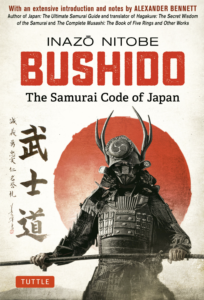
One of the most famous samurai in Japanese history was Miyamoto Musashi. He was renowned not only for his exceptional skills as a swordsman but also for his philosophical insights and contributions to martial arts. Musashi’s fame and influence have endured for centuries, making him a legendary figure in Japan. Musashi is often referred to as the greatest swordsman in Japanese history. He is said to have fought over 60 duels without losing a single one, demonstrating his exceptional mastery of swordsmanship. Musashi developed the unique two-sword fighting style known as Niten Ichi-Ryu, where he wielded both a katana and a wakizashi simultaneously. Musashi was not just a warrior; he was a skilled artist, calligrapher, and writer. Musashi’s most famous work, Gorin no Sho or “The Book of Five Rings,” is a treatise on strategy, tactics, and philosophy. It covers not only martial techniques but also mental and spiritual aspects of combat and life. It remains a classic text in the realms of martial arts and strategy. Musashi’s impact on Japanese culture is so profound that he has become an enduring symbol of Bushido and the samurai spirit.
Samurai as a source of inspiration for arts
In art, literature, and media, the samurai serve as a timeless source of inspiration. Contemporary literature and films often explore the psychological and emotional aspects of samurai life, offering a more nuanced view of their experiences beyond the battlefield. Moreover, creative reinterpretations through graphic novels, anime, and video games offer fresh perspectives on the samurai ethos, connecting with diverse audiences worldwide. From traditional Japanese paintings to modern digital artworks, the samurai’s image and values have been skilfully portrayed, capturing their essence and influence.

Ukiyo-e, Japan’s most famous art form, produced stunning woodblock prints that depicted the lives and legends of the samurai. The Japanese masters Utagawa Kuniyoshi and Tsukioka Yoshitoshi created dramatic and dynamic prints showcasing famous samurai warriors, battles, and legendary stories. These prints often depicted moments of bravery, honour, and loyalty, emphasizing the essence of the samurai’s code of Bushido. Together with these artworks, today museums and galleries exhibit portrait paintings and drawings of notable samurai leaders, leaders that have preserved their likeness and conveyed their commanding presence. Samurai armor and weapons are also a wonderful example of the craftsmanship of samurai. These have had not only a functional aspect but also an artistic one. Elaborate armor designs, helmets adorned with crests and masks, and finely crafted swords like the katana have fascinated artists for generations. Painters, sculptors, and illustrators have often rendered intricate details of these artifacts, capturing the fusion of form and function in samurai attire.


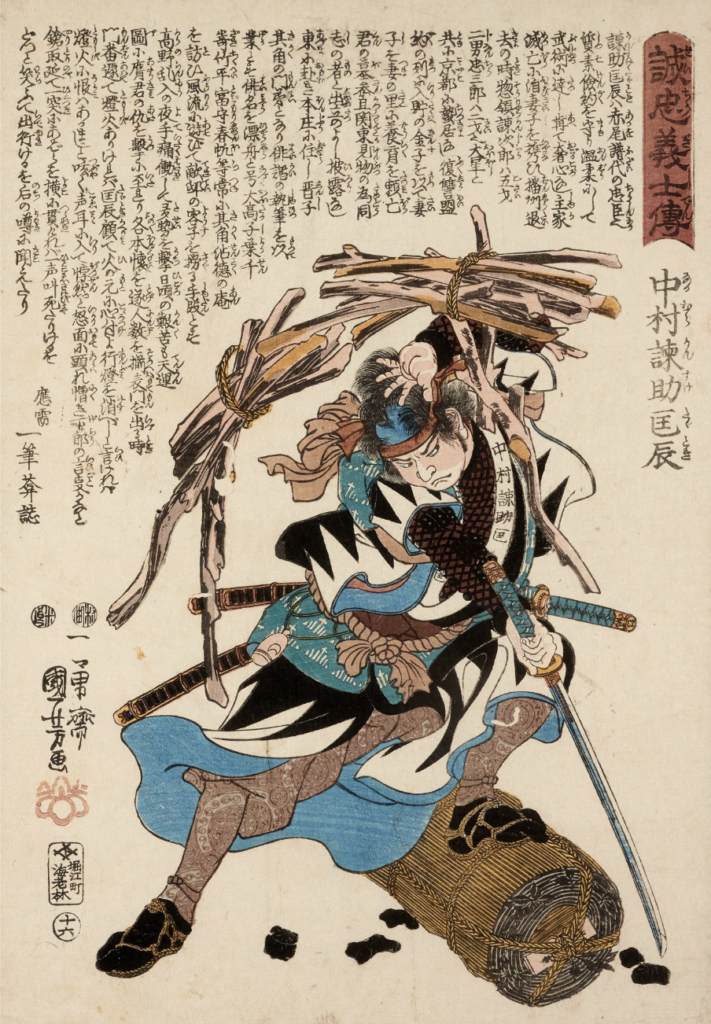
Utagawa Kuniyoshi (1797-1861) | From forty-eight woodblock prints from Stories of the True Loyalty of the Faithful Samurai (Seichu gishi den) via Sotheby’s
The samurai’s influence has not been limited to traditional art forms. In modern and contemporary art, the samurai’s spirit continues to inspire artists who reinterpret and reimagine their stories. Japanese manga and anime have embraced the samurai theme extensively. Works like Akira Kurosawa’s “Seven Samurai” and Osamu Tezuka’s “Dororo” have contributed to the enduring popularity of samurai narratives. More recent creations like “Rurouni Kenshin” and “Samurai Champloo” reimagine the samurai ethos in contemporary contexts, blending historical accuracy with creative storytelling. The realm of concept art and video games has also seen the samurai’s influence. Games like “Ghost of Tsushima” meticulously recreate feudal Japan, offering players the chance to experience the life of a samurai. The art behind these games combines historical research with imaginative interpretations, resulting in visually stunning landscapes, characters, and battles.

The samurai warriors’ rich history, principles, and iconic visuals have left an indelible mark on various forms of visual art. Through traditional and contemporary mediums, artists continue to draw inspiration from the samurai’s legacy, creating works that capture their essence and communicate their enduring relevance to audiences around the world. Admiration for their unwavering dedication and ethical principles is coupled with a recognition of the complexity of samurai actions within their historical context. As the world continues to evolve, the legacy of the samurai remains a rich source of inspiration, contemplation, and artistic exploration.

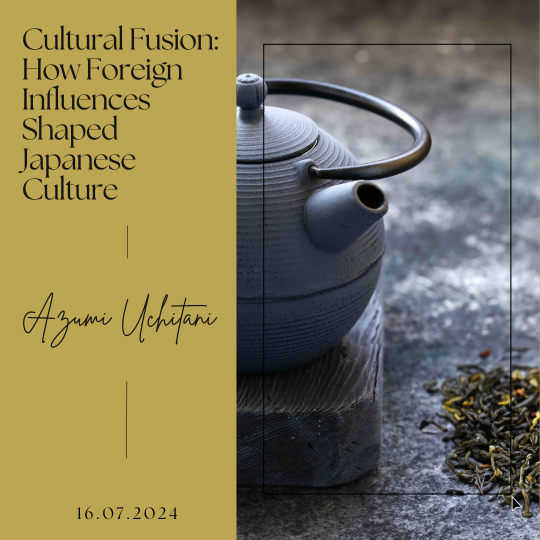


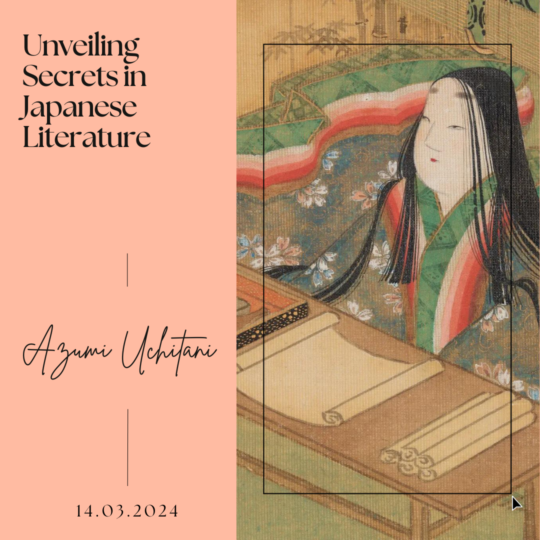
Leave a Reply